
Search by Keyword
Search by Department
All Departments Administration Corrections Development Services Facilities Management Human Resources Information Technology Library Services Management and Budget Services Natural Resources Management Neighborhood and Human Services Parks and Recreation Public Safety Public Works Veterans Services Waste ServicesEscambia County celebrated 10 years of the Perdido Key Habitat Conservation Plan this week with a showcase event for local, state and federal staff. Approved by the U.S. Fish and Wildlife Service in 2014, the PKHCP outlines conservation measures to prevent impacts to the Perdido Key Beach Mouse, nesting sea turtles, shorebirds and their habitats.
The PKHCP also protects the very features that make Perdido Key a vacation destination: the white sand beaches and small-town atmosphere. County staff were joined by representatives from U.S. Fish and Wildlife Service Panama City Office, Florida Fish and Wildlife Conservation Commission, Florida State Parks, the Perdido Key Association and local citizens for a brief welcome before beginning a tour of Perdido Key.
The tour featured Public Beach Access 4, which was purchased with the federal grant for habitat conservation and beach access, the Eleanor Beach development, Lost Key Beach Club, and the Perdido Key Multi-Use Path Ribbon Cutting event. Tour stops highlighted how development and conservation can work hand in hand and the value of building partnerships within the local community.
With limits on how and when development may occur and established conservation measures, the PKHCP balances the needs of the environment with those of the economy. Any parcel that contains federally designated beach mouse habitat must obtain an Authorization of Coverage from the County, also known as a “Beach Mouse permit,” before development or land disturbance can occur.
The Perdido Key Habitat Conservation Plan is considered a “gold standard” plan by the Florida Fish and Wildlife Service and was awarded the 2006 National Partner in Conservation Award and 2017 Regional Recovery Champion Award by the US Fish and Wildlife Service.
"We're very excited to celebrate the 10-year anniversary of the Perdido Key Habitat Conservation Plan, along with the incredible progress we've made over the past decade to proactively conserve and protect critical habitat for our local wildlife on Perdido Key," Natural Resources Management Deputy Director Tim Day said. "We've seen great success in our efforts so far, but the work is far from over. County staff will continue to work with our partners not only to protect our existing wildlife habitat, but also to safeguard the habitat for the future so our beach mice, sea turtles, shorebirds and other wildlife populations can continue to thrive."
Escambia County began the process of developing a Habitat Conservation Plan in 2006. Prior to the PKHCP, individual owners and developers were required to permit directly with the US Fish and Wildlife Service for projects impacting critical habitat. Single family homes took an average of three and a half years and large commercial developments could take five years or more. The PKHCP was designed to streamline the permitting process; today the average project can be permitted in months rather than years. Permitted properties are required to conserve at least 50% of the habitat onsite, minimize impacts through project siting, utilize native landscaping, and incorporate wildlife friendly lighting. Permitted properties contribute mitigation fees to the Beach Mouse Conservation Fund that supports monitoring and education efforts across the Key.
Since approval in 2014, 126 individual permits have been issued through the PKHCP, totaling 19 acres of habitat impact and 50 acres of habitat conservation on project sites. Escambia County has acquired over 30 acres of habitat conservation lands with assistance from state and federal grants, and thereby tripling the conservation acreage required to be acquired by the PKHCP. Since 2014, the PKHCP has contributed $3.7 million in impact fees to the Beach Mouse Conservation Fund, with an annual contribution of $118,000. $4.8 million in grant funds have been awarded for habitat acquisition and restoration. County and partner monitoring efforts indicate beach mice are found throughout public and private lands on Perdido Key, with a high degree of population connectivity. Educational programs engage residents, visitors and business owners in coastal conservation, focusing on native landscaping, wildlife-friendly lighting and Leave Only Footprints beach principles.
Working collaboratively with community partners, Escambia County Natural Resources staff will continue to implement the measures outlined in the PKHCP to protect beach mice, sea turtles and shorebirds today and in the future. Conservation strategies such as land acquisition, habitat enhancement, and partner collaboration are key to being proactive in conserving beach mouse and other wildlife populations against the long-term threats of hurricanes, sea level rise and habitat fragmentation.
For the full story of our “Little Beach Mouse from the South” watch the award-winning documentary by Into Nature Films here or visit MyEscambia.com/pkhcp for more information.
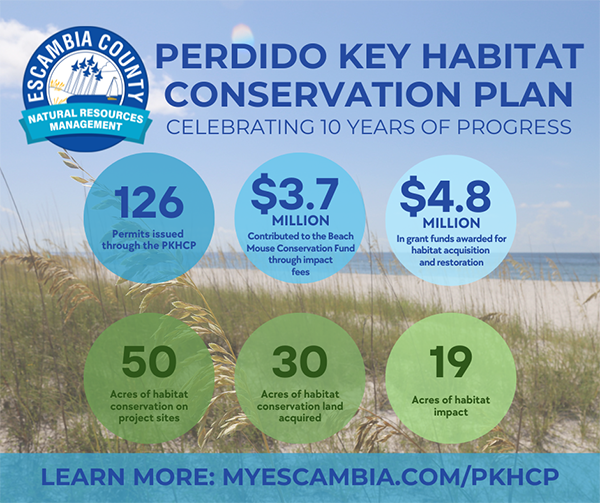
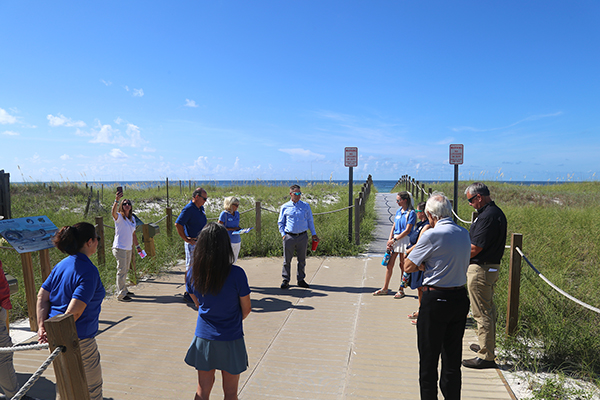
Escambia County Natural Resources Management Deputy Director Tim Day, center, gives a tour of Public Beach Access 4 as part of the Perdido Key Habitat Conservation Plan 10-year anniversary event.
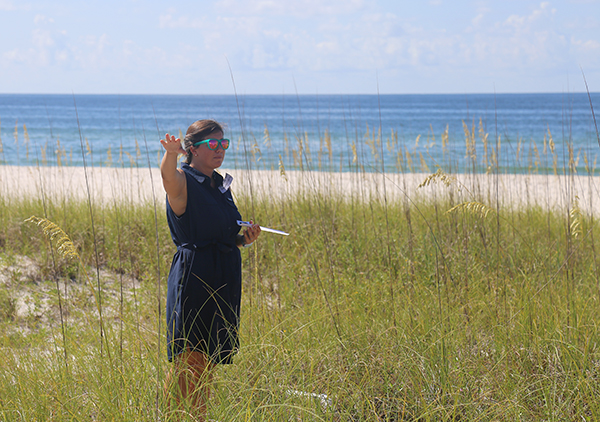
Escambia County Environmental Program Manager Samantha Pitts discusses the beach mouse habitat as part of the Perdido Key Habitat Conservation Plan 10-year anniversary event.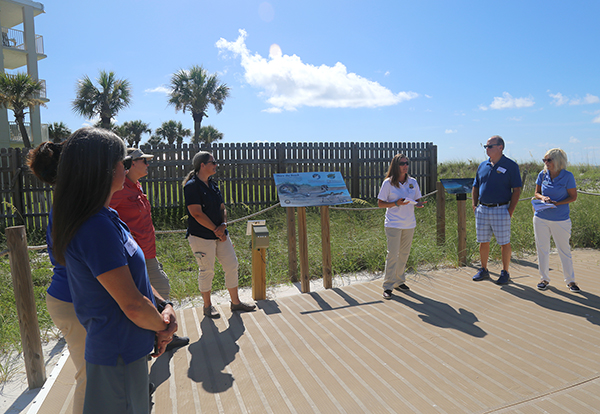

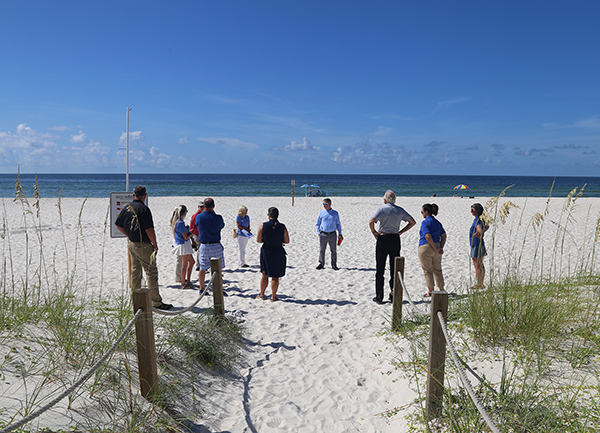
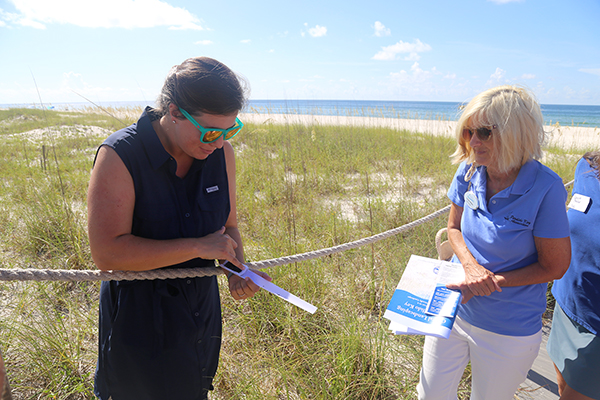
Escambia County Environmental Program Manager Samantha Pitts demonstrates beach mouse tracking methods during the Perdido Key Habitat Conservation Plan 10-year anniversary event.
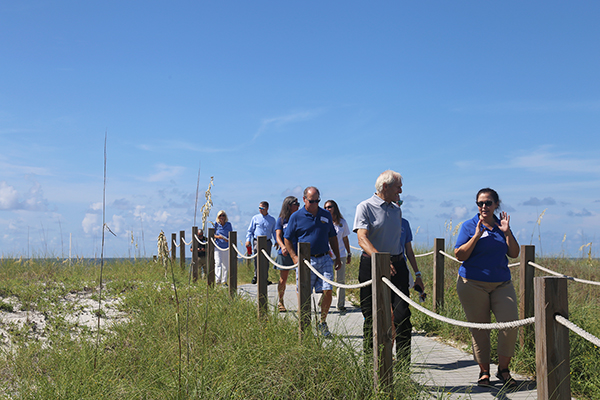
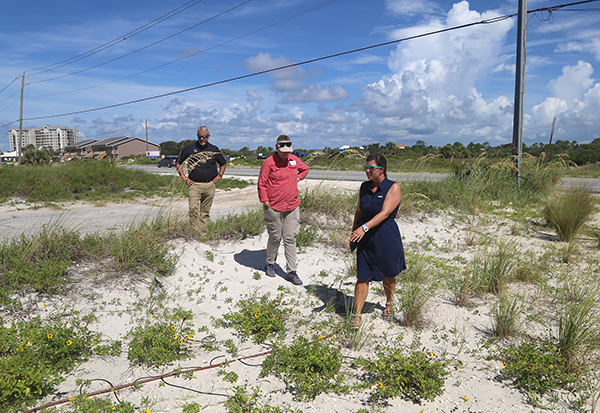
Escambia County Environmental Program Manager Samantha Pitts shows the natural landscaping at the Eleanor Beach development during the Perdido Key Habitat Conservation Plan 10-year anniversary event.

The Eleanor Beach development on Perdido Key, which was constructed with sea turtle-friendly lighting features and beach mouse-friendly natural landscaping.
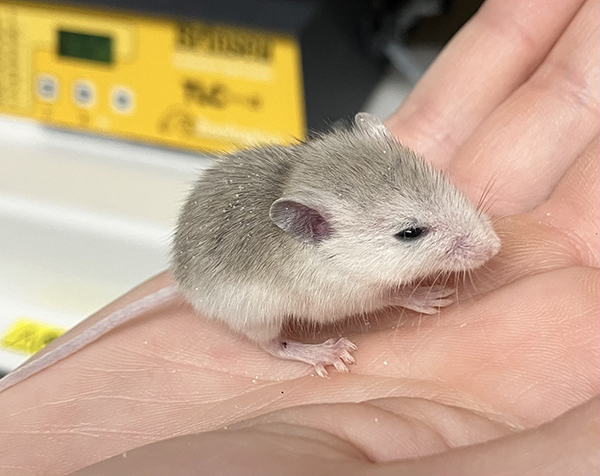
A baby beach mouse, one of the endangered wildlife species found on Perdido Key. Photo courtesy of U.S. Fish and Wildlife Service
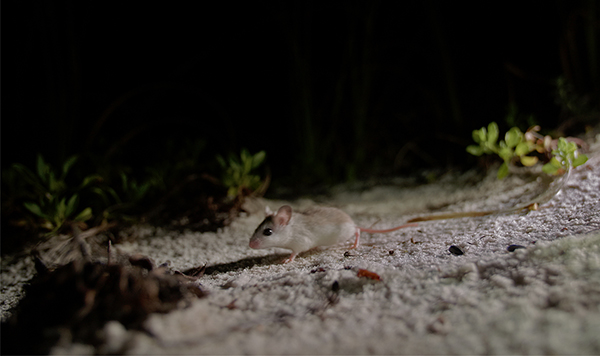
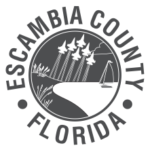
The mission of Escambia County government is to provide efficient, responsive services that enhance our quality of life, meet common needs and promote a safe and healthy community.
Under Florida law, IP addresses and both the content of emails and email addresses are public records. If you do not want your IP address and the content of your email or your email address released in response to a public records request, do not send electronic mail to this entity. Instead, contact this office by phone or in person.

